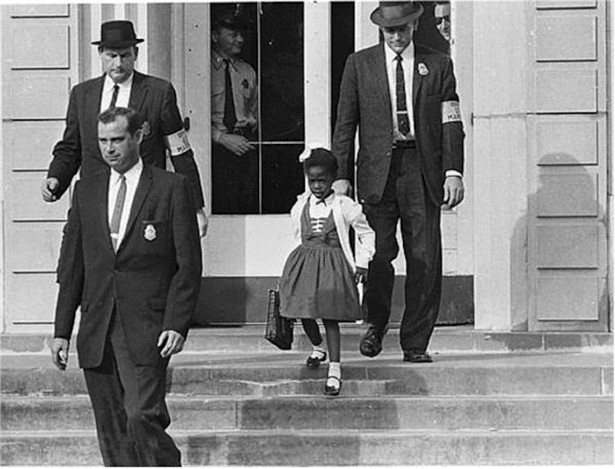
The statistics are undeniable. Across New Jersey, hundreds of thousands of black and Hispanic students attend schools that are almost entirely non-white.
The question is whether the state should step in to do something about it.
A lawsuit filed earlier this month accuses the state of being complicit in allowing one of the most segregated school systems in America and calls for a comprehensive desegregation plan.
The legal challenge, filed by a coalition of civil rights groups, has spurred questions about what segregation really means and what changes could be in store for students if the lawsuit succeeds.
Here’s what parents should know about the case:
The legal definition of segregation might not be what you think.
Segregation is often thought of as the mandatory separation of whites and non-whites, like white and black bathrooms or lunch counters.
But New Jersey’s Supreme Court has taken a different position, ruling in prior cases schools can be considered segregated even if it’s “de facto segregation,” the plaintiffs argue.
In other words, socioeconomics and race often go hand-in-hand in New Jersey. So, if black and Hispanic families would like to send their kids to a school with white children but can’t afford to live in such a school district, they’re effectively being segregated into a district such as Irvington, Plainfield or New Brunswick — all places where fewer than 1 percent of students are white.
Based on legal precedent in New Jersey, that kind of segregation violates the state constitution, the suit claims.
White suburban kids likely wouldn’t be forced to go to urban districts.
That’s not the goal of the lawsuit, the plaintiffs said. The focus is to establish more choices for low-income minority students who are trapped in their home district — or attending a similarly segregated charter school — because of their ZIP code.
The suit aims to strike down the requirement that students must attend schools where they live and force the state to come up with solutions for getting black and Hispanic kids into integrated schools.
“It would not blow up the whole system,” said Gary Stein, a former state Supreme Court justice who spearheaded the lawsuit. “It would simply knock down a fence that is a barrier to diversity.”
Integration could come in many ways, all likely controversial.
The civil rights groups don’t say exactly how the state should integrate schools and instead call on the state education commissioner to make those decisions on a case-by-case basis.
But the lawsuit does float ideas for how to get white and non-white students under the same roof.
One suggestion is to follow what happened in Hartford, Connecticut, after a legal fight over desegregation in the 1990s.
A series of themed magnet schools were created within the city and nearby suburbs. That drew white students into new schools in Hartford and minority students to specialized schools in the suburbs, Stein said.
Another option is a voluntary transfer program in which suburban districts would agree to allow a certain number of students from city districts into their schools, possibly with a financial incentive to do so.
Students from urban districts would have the opportunity to attend those schools but would not be forced.
The lawsuit also mentions the possibility of district consolidations, such as the forced merger of Morristown and Morris Township school districts in the 1970s after a state Supreme Court ruling.
That decision brought together students from largely white Morris Township and the predominantly black Morristown, a doughnut-hole city surrounded on all sides by the suburban township.
But any of these changes would come with major questions, like how students would be bused to their new schools, who would pay for it and how much backlash will follow integration efforts.
This puts some major political pressure on Gov. Phil Murphy.
Murphy, a Democrat, considers himself a champion of civil rights and often touts that he’s assembled the most diverse Cabinet in state history.
Does he really want to be the governor who fights against school integration?
His administration didn’t comment on the lawsuit directly, but a spokesman said Murphy “believes strongly that we must combat the deeply rooted problem of segregation.”
The governor is sure to face political pressures from both sides, said Brigid Harrison, a political science professor at Montclair State University.
Sweeping changes would be expensive and politically unpopular in some circles, which complicates any potential solution to the problem, she said.
State Assembly Minority Leader Jon Bramnick, R-Union, has already criticized Murphy for not saying whether he will fight the lawsuit.
“There’s only so many seats in a school system such as Westfield or Bernards Township,” Bramnick said. “Are you going to give priority to students in that hometown to go to neighborhood schools? Are you going to make sure that’s a priority?”
Just because desegregation is controversial doesn’t mean it won’t happen.
The civil rights groups behind the lawsuit have “about as good a chance as anyone could have” to win their case, said Derek Black, a professor of law at the University of South Carolina and expert in school desegregation cases.
“They have got an incredible set of facts, they have an incredible set of prior cases and they all point toward the fact they ought to be able to get a remedy here,” Black said. “I can’t imagine a better set of circumstances than in New Jersey.”
Still, Black suspects the state will fight the lawsuit because of the enormous political pushback that would come with changing the status quo, he said.
He wouldn’t be surprised by a settlement agreement, though, especially if Murphy feels the law and facts are against the state.
“If the state wants to get off easy, maybe the smart thing it could do is not fight tooth and nail but rather agree to some smaller baby steps that would be enough for the plaintiffs to say, ‘We will take that,'” Black said.
[“Source-nj”]

